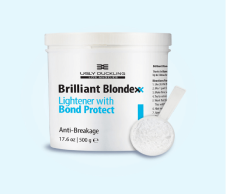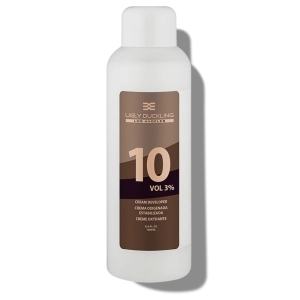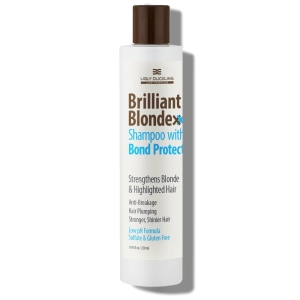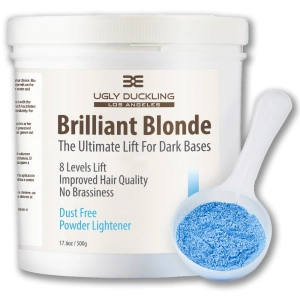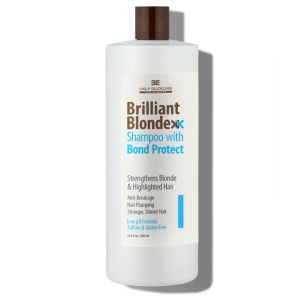Product successfully added to your shopping cart
There are 0 items in your cart. There is 1 item in your cart.
How Professional Color Works
Today, we are going to learn how hair color works.
What is hair made out of?
The hair is made out of three things.
- The cuticle, which is the outer covering of the hair. This is what gives the hair its shine and strength and protects it.
- The cortex, which is the middle layer of the hair. The melanin, which are the color molecules which give the hair its natural color are located here.
- The medula, which is the hollow tube at the center of the hair.
How does permanent color work?
When you color hair, what happens is you open up the cuticles of the hair.
You take out the natural melanin, which exists in the hair.
You recolor that melanin, it's called repigmentation. And then you close the cuticle.
And typically that process takes between 15 to 30 minutes. 1:12
Now, in order to do that, you basically need to, to do two things, you need to have two things. Y
ou need to have your color and you need to have your developer. 1:21 So the color is in a tube, or it can also be in a liquid form, in a bottle.
And the developer normally is a cream-based formula which comes in a bottle. 1:32 You mix the two together, and that mix is what allows you to open the cuticle of the hair, take out the melanin, re pigment, the hair. 1:43 And then when you wash the hair and when you condition, ideally using an acidic shampoo, you really re-close a cuticle and return the hair to its normal position. 1:55 So that's how hair coloring works, and that's why you need the color and developer. And you need to mix the two. 2:03 So that this process of opening the cuticle, taking out the melein, recoloring, the melin and re-closing the cuticle can take place. 2:15 The international coloring system, which is what all hairdressers use. We need to know this if we, if we're going to start coloring hair like a professional. 2:25 We use numbers from one all the way up to 10 to explain how light or how dark hair is. So for example, six is dark blonde. 2:37 Okay? So, and it goes all the way up to 10 extra light blonde. So stick with these numbers. It will give you a very objective assessment of how light or how dark your hair or your client's hair is. 2:53 The reflex system, these are the secondary colors. There are actually two systems out there, 2:59 European system and American system, but they're very similar. And we can actually just learn them both. You've got natural, which is N, you've got double zero, which is extra coverage. 3:13 You've got 0.1, which is ash. You've got 0.2 or V, which is violet. You've got three or G, which is gold. 3:22 You've got four or C, which is copper 0.5, or red violet, which is mahogany. You've got six or R, which is red, and you've got seven or B, brown, which is chestnut. 3:39 And you, this is how they, they, it works together on a tube of color. You'll see these numbers. So 6.31, I've taken an under ducking color, but I could have taken any brand of color. 3:51 Now you'll see a name, but you'll also see a numbers. So 6.31. This simply means it's a dark blonde. The primary reflect is 0.3 which we saw as gold or G. 4:04 And the secondary refl reflect is 0.1 or ash. So dark blonde with a gold primary reflect and an ash secondary reflect is what this color is. 4:18 And when you open any hair coloring chart, you will see you've got the levels going up one side, and you've got the reflex going the other way. 4:27 So you can very easily find out which color you want, or if you've got a color in mind, you can see how it fits in with the other colors in the range. 4:37 And this is, as I said, this is the, the duckling hair color chart, but any hair coloring chart works in this way. 4:45 What are the difference between different types of hair coloring products? So you've got permanent color, which we just went through, which is color mixed with developer which penetrates a, opens a cuticle and penetrates a hair. 5:00 A demi is actually exactly the same as a permanent color. The only difference is that there's no ammonia. Sometimes it lasts less long, and very often it has less lift. 5:11 But it's also something where you mix a product with a developer. A toner is also either a permanent or a demi permanent color. 5:20 And it works in the same way. You mix it with a developer, and typically you leave it on less long and typically use a weaker developer strength, but it works in the exact same way. 5:33 A bleach, you also mix a developer, but this is a pure lifting agent, which takes out the melanin from the hair and lightens it. 5:41 You need to bleach when you need to lift three levels or more. You need to bleach first and then tone or then color. 5:49 Yeah. Finally you've got semi-permanent color. This is, this is not, 5:58 Doesn't work like any of these other products because it only works on the surface of the hair. It works like paint, basically. 6:06 And no developers needed. Some of them can be very permanent. In general hairdressers like to use permanent and demi permanent and to and bleach. 6:17 These are products you can use. You can change your client's hair. You can change your own hair and then you can change it again. 6:26 And it's, it's a very consistent and pr gives very consistent and predictable results.

